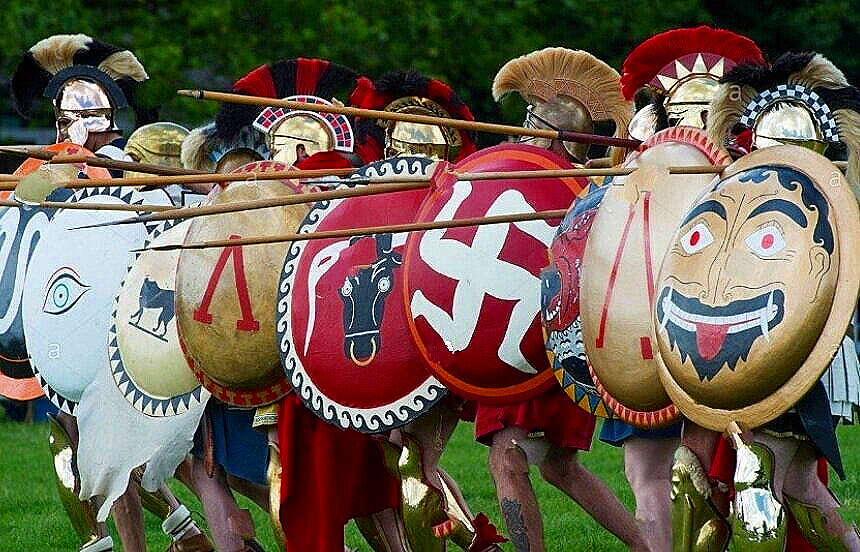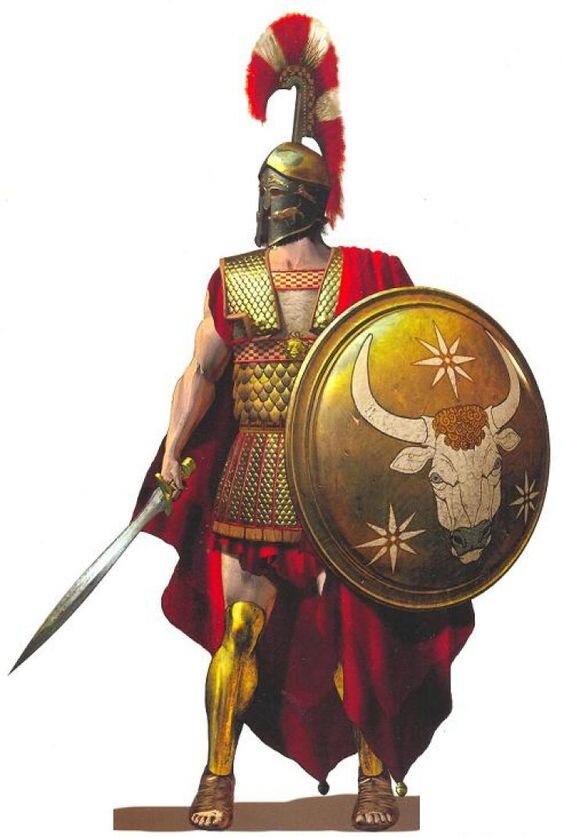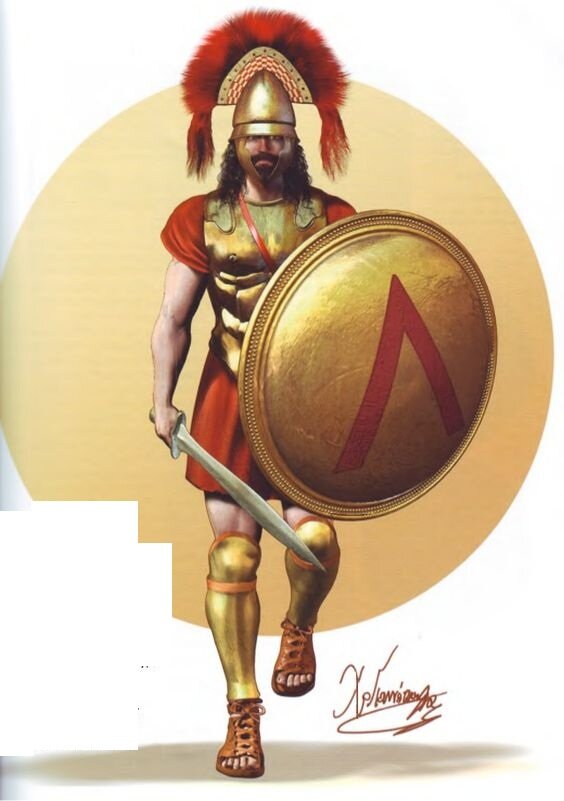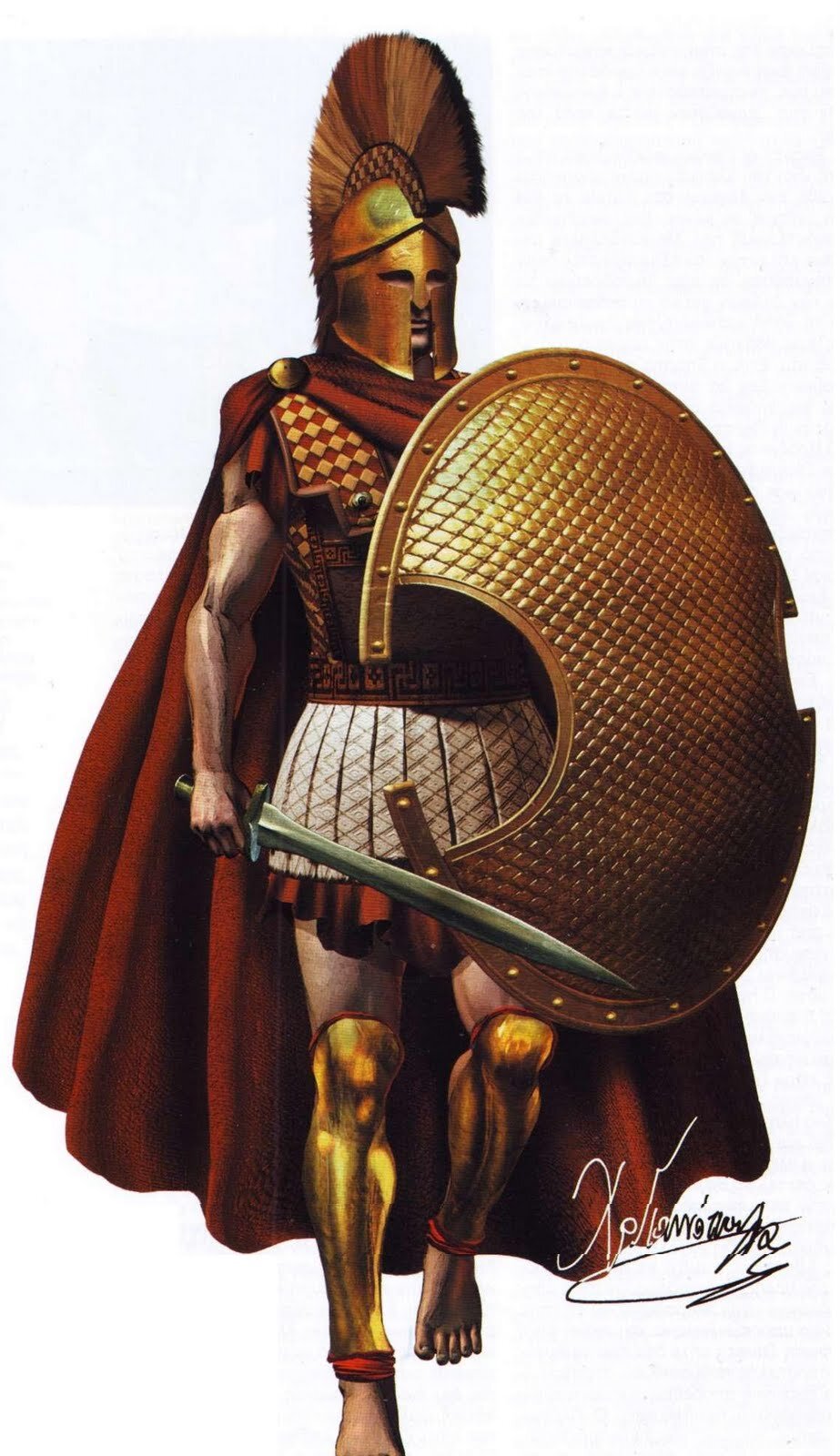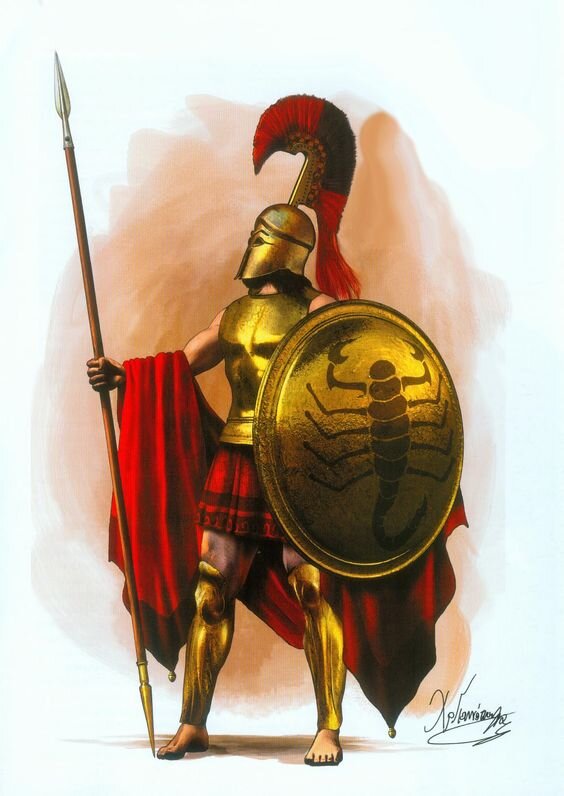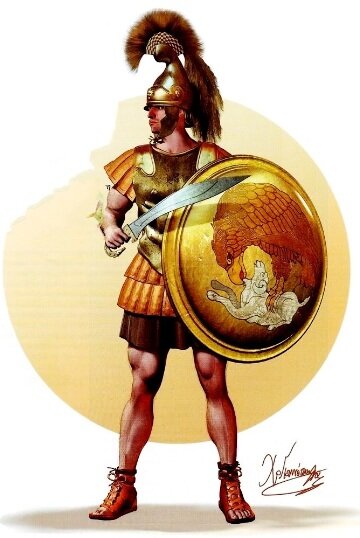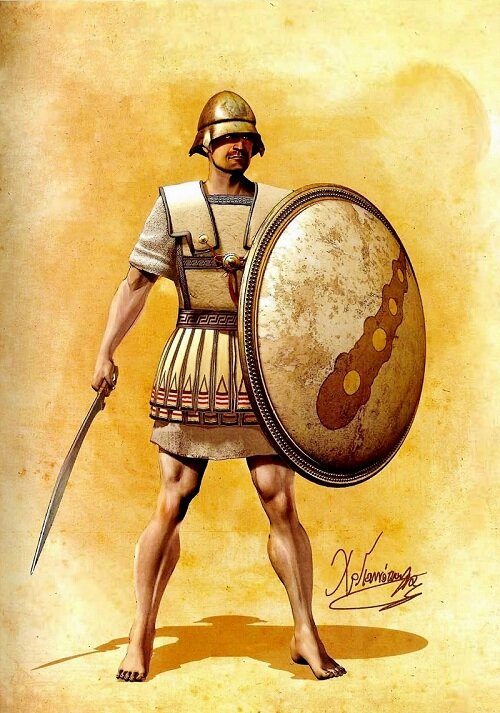10 Military uniforms of ancient Greek warriors from Sparta and Athens to Macedonia
Ancient Greek Soldiers at Military Odyssey Show - Tim Gainey / Alamy Stock Photo
1} Athenian officer (5th B.C.)
The elaborate breastplates of the most prominent citizens of Athens were lined with overlapping brass scales of various sizes, while the edges of the different sections were decorated with colorful designs. The Corinthian helmet of the officer is of two colors, the hood being left in the color of the brass, and the mask painted black for impressions. The raised plume of the helmet gives the officer a larger stature, while his metal shield is decorated with the white bull's head, one of the most popular emblems of the Athenians.
2} Spartan Officer (4th B.C.)
The Spartan officer wears breastplates with metal shoulders, an open helmet with the characteristic inverted plume of the Doric rank, a shield with the Greek letter Λ (Λακεδαίμον - Lacedaemon) on the outside, and brass leggings with leather straps.
3} Hoplite of Plataea (500 - 490 B.C.)
Most Plataean warriors were between 18 and 25 years old and wore long cloaks, Corinthian helmets without ornamental elements, high leggings of brass, and shields or Boeotian coats of arms.
4} Athenian hoplite (5th B.C.)
He has a crested helmet of the Attic type, light linen breastplates with leather wings, high brass leggings, and a shield to which is attached a woolen curtain to protect the lower extremities from enemy arrows. His offensive weapons are the long spear and the sword.
5} Spartan Hoplite (480 B.C.)
All Spartan hoplites of this period of Median Wars wore red clothing, bell-shaped breastplates of brass, leggings, a shield, and a closed Corinthian helmet.
6} Special hoplite of Ilia (4th B.C.)
The patron god of Ilia, Zeus and his symbol, the eagle, were depicted on the shields of the hoplites. The selected hoplites of Ilia wore crest helmets with an ornate "pediment" above the cornice. The armor is complemented by characteristic breastplates.
7} Lacedaemonian warlord (489 - 479 BC)
The Lacedaemonian warrior wears a helmet with the characteristic inverted Doric plume, a shield depicting a bull's head (considered one of the eight emblems that characterized Spartan units), an early breastplate, and brass leggings.
8} Sikyonian Marine (5th BC)
The classical Greek naval soldier of the 5th century BC wore only the basic defensive armor (shield and helmet) so that if the ship he was on sank, he could swim safely without unnecessary weight. His offensive weapon was the heavy knife, a typical weapon of the Median wars.
9} Theban hoplite (4th BC)
This representation is based on Boeotian coins. The hoplite wears a peculiar Boeotian helmet with a broad brim and cheeks, the leather breastplate, a shield with the emblem of the Hercules bat, high leather boots (outside the borders of Boeotia the high boots were characteristic of the horsemen and the sword.
10} Macedonian phalangite (pedestrian)
The backbone of Alexander the Great's army was the spearmen who fought in the huge Macedonian phalanx. This phalanx was equipped with a bronze helmet, a bronze breastplate worn over a leather sleeve, and bronze leggings. They carried shields smaller than those of the southern Greek hoplites, about 60 cm, which they hung on their shoulders, leaving both hands free to handle the sarissa, which was a long spear made of skull wood about 6 meters long and weighing up to 8 kg.
Image source: Christos Giannopoulos - Nicholas Panos

